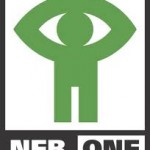Recently, the Vancouver School Board announced that it is moving forward with its plans for an Aboriginal-Focused School of Choice. This school is scheduled to open, at least partially, as early as September, 2012. Interestingly, the school will be one of choice and be open to all students, although Aboriginal students may be given priority (more about the school in a future post). Given this development, I thought it would be interesting to examine a couple of existing First Nations schools
First Nations School of Toronto. This school was initiated by a group of Aboriginal parents in the 1970’s who were concerned about the high numbers of FN children who were not completing elementary school. The parents felt that the children lacked self respect and were significantly at risk. They believed that education was key to teaching them about their Aboriginal heritage, and instilling pride for their identity. The initial school was called the “Wandering Spirit Survival School.” After joining with the Toronto BOE, the school became the First Nations School. Today, it serves 70 students from JK- Grade – 8 and is located at Dundas and Broadview, sharing a site with public school.
Some of the supports provided to students:
- Half Time Librarian
- Full Time Ojibway Teacher (in lieu of French), serving students from K-8
- Half Time Traditions and Culture Instructor, serving students from Gr 1-8
An Honour Feather Society was created to help build self-esteem. Individual students are recognized for their various successes, and awarded a feather in a traditional ceremony to honour their clan.
Some interesting programs:
- Diabetes Education Program (including parent component) with Toronto Public Health
- Dodem Kanonhsa’ Aboriginal Cultural Facility: partnership to access Traditional Elders to support Literacy
- Antibullying/Anti Gang Workshop
Native Learning Centre Alternative High School (grades 9 – 12)
In October 1998, the Native Learning Centre (NLC) was piloted as a high school program for at-risk First Nations students. The NLC began with 15 to 20 students in a one-classroom setting, located at 456 Yonge Street. The school includes an art program, recreational outdoor activities, traditional canoe trips, and cultural excursions led by elders. The NLC has now expanded its programs and now is able to provide all compulsory credits necessary for students to achieve an Ontario Secondary School Diploma. In November 2005, the NLC received a City of Toronto Access Award (Equity). The school is now housed within Church Street junior public school. Approximately 40 Native high school students currently attend.
Native Studies courses available to NLC students:
- “Aboriginal Beliefs, Values and Aspirations in Contemporary Society”
- Aboriginal Governance: Emerging Directions
- Aboriginal Peoples in Canada
- Current Aboriginal Issues in Canada
- English: Contemporary Aboriginal Voices
- Issues of Indigenous Peoples in a Global Context
This list of courses goes well beyond the First Nations 12 that is available to BC students and is indicative of a strong commitment towards Aboriginal education by the TSB.


